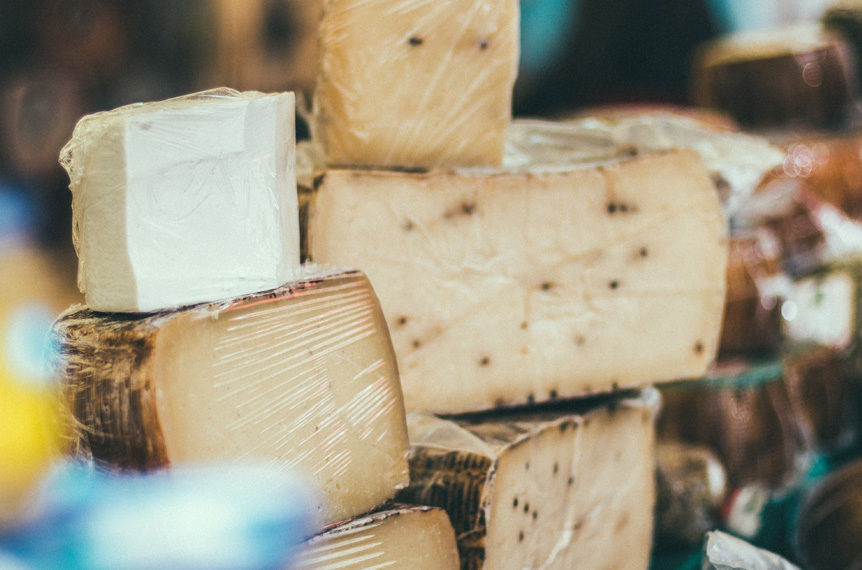This is a “natural rind” Blue cheese, while the rind can be strong it is edible.
Ingredients:
• 150 L Pasteurized non-homogenized Cow’s Milk
• 2.0 g MA4001
• 1.0 g LH100
• 0.2 g P. roquforti.
• 90 ml enzyme
• 30 ml CaCl2 Diluted in 1 Cup of Non-Chlorinated Water
• Salt – 2.5% of curd weight.
Directions
1. Add CaCl2 to the cold milk and then heat milk. When the milk reaches 10° Celsius/50° Fahrenheit, draw off 1 liter of milk and add then sprinkle cultures over the surface of the milk and allow 5 minutes to rehydrate and mix in. When the milk reaches 150 Celsius/590 Fahrenheit, incorporate the cultures into the vat.
2. Continue to heat the milk to 32° Celsius/89.6° Fahrenheit.
3. Stir the enzyme into the milk for 1 minute. Hold temperature at 32° Celsius/89.6° Fahrenheit, until a clean, but soft, break is achieved. Should be 2.5-3 hours.
4. Prepare several colanders or tubs by lining them with sterilized cloth cheesecloth. Synthetic will not work.
5. Gently scoop the curds, in thin layers, into your prepared colanders or tubs that you prepared earlier. Tie the cheesecloth in “Stilton Knots” and place them back into your clean vat (You can use cloth drinking bags but you have to tie a knot in them, and they won’t get as tight). During this time you temperature of the curd should remain at 32°C/89.6°F.
6. Cover the vat and allow the cheese to ripen in the bags. Flip the bags and tighten the knots every hour until the curd is firm. Maintain the temperature at 32° Celsius/89.6° Fahrenheit during this stage. Your goal pH is 6.36. Once the pH is reached, you can drain the whey.
7. Remove the curd “slabs” from the cheesecloth and place them back into the vat being sure to place the curd slabs towards the sides of the vat to drain away the whey. You should keep a center channel to allow for they whey to escape. If you can incline/angle your vat do so at this time. If your vat does not incline, you may need to scoop out any whey that pools in the center channel. Flip the curd slabs every hour until you reach a pH of 4.6 to 4.8.
8. Mill the curds to thumbnail size chunks and then weigh your curds. Mix with 2.5% salt by weight. If you get 14 kg of curd then add 2.5% of the weight in salt or 350 g.
9. Then place in warmed unlined sterilized basket molds and set on draining table. Flip at 30 minutes, then 3-4 hours, then again at 12 hours. Turn daily for 2-4 days; room temperature can be at 200 Celsius/680 Fahrenheit, by the second day.
10. When the wheel has consolidated its shape you can then remove from the mold and “Rub Up” the sides and top to create a smooth surface. You may have some curd crumble off the sides, which is normal.
11. Move wheels to ageing room at 10° Celsius/50° Fahrenheit, and 90% RH. Turn daily for the first month. After 3-5 weeks pierce with sanitized skewers from the sides using a slight downward angle.
12. Age for 2-3 Months, turning to prevent sticking. Check texture after 2 months to see if it is ready.
Notes: This formula produces roughly 14 kg of cheese. Scaling up or down may take a few tries. But for 10 liters of milk you can use 2.5 to 5 ml of enzyme as a start point. You do not need to use Basket Molds if you do not want too. Bottomless Camembert Molds will work too. Be creative with shapes and sizes.
Contact EDC To learn more about Thistlezyme®
